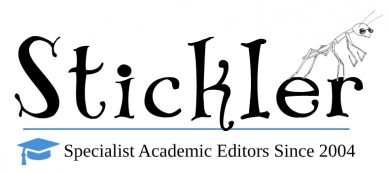Once your paper, dissertation, thesis, or other academic document has been written and you’ve triple-checked your facts and sources, it’s time to start the difficult job of editing and proofreading. This step is essential, as even the smallest errors can significantly damage your grade or cause your work to be rejected for publication.
However, editing and proofreading your own work can be difficult. Here are our top five tips for academic editing.
1. Read your academic paper out loud. It’s important for academic editing!
Remember that if it doesn’t make sense to you, it won’t make sense to your professor or to the editor of an academic journal. Besides helping you assess the clarity and flow of your paper, reading aloud can help you find missing or double-typed words, and mistakes in punctuation.
2. Lose your pride.
You know your paper, essay, article, or thesis is amazing—or at least you think it is—but now you need to take a step back to edit and proofread it like it’s not even your own work. Turn off your pride for a moment and read it like it’s new to you. Does your paper or thesis make sense? Now is the time to clarify sections and expand on areas of your paper that aren’t clear.
3. Consider word count.
Word counts are put in place for a reason, which might be related to space requirements (or time requirements in the case of student work), accepted practice in your field or target journal, or both. You should always try to adhere to the exact guidelines provided even if you feel like you’ve fulfilled the requirements of the assignment in fewer words. Likewise, if you have gone over the word count, it’s likely that your paper would benefit from additional editing.
4. Check for consistency.
Is your document formatting consistent from page to page? Are you using the same fonts for each type of heading and subheading? Have you formatted your tables, figures, and references consistently, and in line with any style guidelines? Failing to follow guidelines or using a number of styles for tables and figures not only looks unprofessional, but can take the reader’s mind away from your topic and argument.
5. Double check the references.
For most academic papers, you will need to include a reference list or bibliography of some kind. Ensure that the references are complete, and that each item is consistently styled. You will usually be required to provide full details for each source, including the author name, the year of publication, the article or chapter title, the book or journal name, and so on.
Even after completing the steps above, papers almost always benefit from complete editing and proofreading services from a professional company, such as Stickler Proofreading. Professional editors will be able to examine your paper with fresh eyes, and apply their expertise and knowledge to get your paper up to submission or publication standards. As well as finding any errors that you have missed, they will highlight unnecessary repetition, as well as sections that may require further explanation or additional sources, thereby helping to ensure that you deliver the best academic paper possible.

